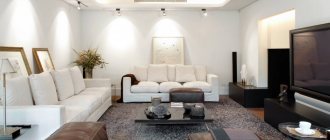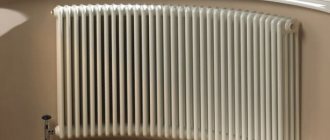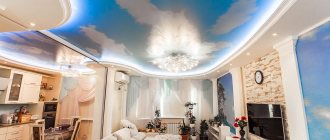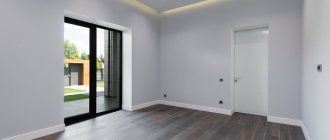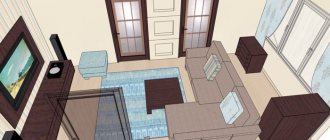Today, lighting has ceased to be just an addition to the interior and has become one of its main components. Now the lighting plan in an apartment design project is prepared along with the furniture, and they think about lamps during the planning process. Designers are looking for a balance between aesthetics and practicality, unusual options, developing different lighting scenarios to make the interior come to life and the owners to feel comfortable and pleasant living in it.
But what if you're already busy renovating and have a trip to the lighting store coming up? We asked interior designer Ekaterina Belyaeva to give us some professional advice so that no one makes annoying mistakes. Everyone should get the lighting of their dreams!
Ekaterina Belyaeva, designer of ReRooms
She graduated from the Tula Polytechnic Institute and has been working as an interior designer since 2012. Owns a workshop of design and designer interior items, and runs a blog. Creative credo: design is not fashion, but good taste!
Follow three main rules
When you start preparing a design project for apartment lighting, first of all remember three rules. There are three types of lighting: basic, directional and decorative. The first includes chandeliers or spotlights, the second includes sconces, table lamps, spots, and the third includes lighting for niches, furniture and individual areas. So, in order for the interior to be harmonious, it is important to use all three types of lighting in each room.
Photo by ReRooms
Light zoning in a studio apartment
A studio apartment is a room that is limited by load-bearing walls without partitions. This room has a small area, but allows you to implement new lighting ideas.
Lamps for each zone must be selected individually. To illuminate the kitchen, use spotlights or LED strip above the cutting surface and a pendant lamp above the table. You can install a sconce or floor lamp near the sofa or armchair. A wall-mounted device is needed in the recreation area. Place a lamp with a cool glow on your desktop. You can install several floor lamps in the living room.
Focus on the cardinal directions
Even before the renovation begins, you will have to decide where and what kind of lamps will be located in order to prepare a place for them during roughing and finishing work. Be sure to orient the interior according to the cardinal directions. Figure out how much natural sunlight each room will have during the day, and be sure to take that into account when choosing the number of fixtures.
Photo by ReRooms
Wall lighting
Never forget about lighting vertical surfaces. About 80% of our attention in rooms is focused on the walls.
When we move, communicate with each other, or simply sit in a chair, our gaze is always directed to vertical surfaces, and not to the ceiling.
The ceiling space takes up only 15% of attention, and the floor gets only 5%.
Therefore, if you want to get a comfortable room where it will be pleasant to be, do not forget about lighting the walls. In large living rooms, the concentration of lamps around the perimeter should be done based on this rule.
Seek help from psychology
To psychology, feng shui or other spiritual teachings that will tell you how to properly use light in the interior. Each room has its own purpose, and for each room we think about the quantity and quality of light. For example, the living room is the main room in the house; it needs soft, diffused light that does not produce glare. The kitchen is the most “active” technical room, so it needs strong and bright directional light and separate lighting for the work area. The bedroom may be in twilight, and it is better if the light is dimmable. Be sure to take this information into account when you develop a design project for apartment lighting.
Photo by ReRooms
Standards and requirements for indoor lighting
The basic requirements for home premises are set forth by SanPiN 2.2.1/2.1.1.1278-03, as well as SP 52.13330.2011. These documents establish the need to take measurements at floor level, and regulate the following parameters in lux:
- 150 Lux for kitchen and living areas in an apartment;
- 200 Lux for children's;
- 50 Lux for bathroom, toilet, corridor;
- 300 Lux for areas of the apartment with increased visual stress (offices, reading rooms, libraries);
- 400 – 500 Lux regarding the surfaces of work tables, places for doing handicrafts, and doing school assignments;
- 20 – 30 Lux for stairs, lobbies.
All data is calculated relative to a unit of area in the apartment. However, the above figures are only general recommendations regarding the rooms of the apartment. For each case directly, it is necessary to take into account a number of nuances on an individual basis.
Don't neglect the technical part
When choosing lamps, you need to pay attention to their characteristics, especially the lighting area. In addition, in stores, lamps are often already connected so that you can see how much light they actually provide and how it is distributed. This is important so that you get not just a beautiful, but also a practical chandelier that will perform its tasks. Design alone is not enough! Also pay attention to what kind of lamps the lamp is designed for: the softest and most practical are LEDs.
Photo by ReRooms
Shadows from lamps: decorative effect or disadvantage
Designers classify decor with shadows as a type of creative lighting. To create fancy patterns on the wall, just choose lamps with perforated lampshades. Light streams will penetrate through the holes and softly scatter across the surface.
Another important aspect of a home shadow theater is the background where the reflection will fall. If it's dark, it won't have a stunning effect. Shadows look beautiful only on a light, monochromatic surface.
Let's look at the situation from the other side. The shadow of a low-lying pendant lamp falling on a table or bar counter is unlikely to delight. Therefore, when creating a scenario, consider suitable locations for the location of light and shadow sources.
Chandelier shadows as a decorative element
Follow the style
Lamps should still fit into the interior and decorate it, especially today, when there are so many designer chandeliers in stores that look like sculptures. There are manufacturers who specialize only in Art Deco style lighting, for example, or who only make children's lamps. It's always best to go straight to an expert in the field you need. But remember that the number of decorative details, material and color of the lamp will affect the quantity and quality of light, so try to maintain a balance.
Photo by ReRooms
One color temperature
In a good, complete, complete interior, the light environment should be monotonous.
This means that for lighting it is necessary to use lamps with the same color temperature.
A rare exception may be the case when you want to emphasize the texture of some materials, or highlight individual interior items.
Don't forget the bathroom
In the bathroom, light is often neglected, thinking that two light bulbs on the ceiling are enough. But even in this case, one must remember the rule of three types of lighting and take into account all human needs. To make the bathroom cozy, you will need lighting for the mirror and, possibly, the furniture. More light - more comfort!
Photo by ReRooms
Lamp selection
How to calculate lighting? This question worries many apartment owners who are starting to renovate their own apartments for the first time. Experts recommend installing light sources in such a way that there are about 20 watts per meter of ceiling.
There are several lamp options available for luminaires today:
- Incandescent lamps. This is the most common way to create a lighting mood. This option has the lowest cost, but such lamps do not work very long, heat up quickly, and therefore are not suitable for paper lampshades, and consume quite a lot of electricity.
- Halogen lamps. They are more powerful, but also more expensive.
- Reflective lamps or spots have an extended lifespan and several shades (cold, neutral, warm).
- Fluorescent lamps. Such light sources are rarely installed in apartments; they are more suitable for industrial workshops and offices. The light is particularly bright, annoying if used frequently.
- LEDs. Such lamps are particularly economical, provide light that is pleasant to the eye, but are not low in cost.
The psychological impact must also be taken into account. It is known that
- Cold light helps to concentrate, so it is often used in rooms where you need to quickly gather your strength and thoughts. These include an office, a child’s workplace, and a cooking area in the kitchen.
- Warm colors help you get more enjoyment out of life. They are used in rooms intended for recreation. This is the bedroom, living room, dining room.
The rules assume that all lamps in one room will be selected in the same color scheme. In any case, this makes it easier to answer the question of how to make the lighting in the apartment the most harmonious.
But you can also choose different “temperatures” of the lamps. In this case, there will be an additional division of one room into different functional zones.
For small rooms, it is better to purchase small lamps with a minimum amount of decorative decorations. Mirror and glossy surfaces that actively reflect light will help to enlarge the room; lighting along the floor or along the bottom of furniture will slightly raise the ceilings.
In a spacious and high room, you can afford a little more and stock up on original chandeliers and sconces. But even at the same time, it is important to remember that the lamp should not become the center of attention. In terms of decorative properties, it plays a secondary role.
Think about management
It is also often forgotten when choosing flooring and wall color, but it is imperative to remember! Otherwise, you will have to walk across the entire apartment to turn on the light in the hallway, and put up with too much bright lighting in a small area. Pass-through switches and dimmers are very helpful in controlling light even in small apartments.
Photo by ReRooms
Where to begin? Features of modern lighting in the interior
Start with yourself and determining your own needs!
Think about what you like to do, find a suitable area for it. Always try to answer the question “Why?”, then errors will be minimal.
For example: “There will be a sconce here because on this wall I want to hang my favorite reproduction and highlight it with light. And this simple sconce design will be white, like the wall, because the main thing is the picture and the emphasis should be on it.”
Model space with light
With the help of light you can visually change the space of a room. This is especially important if you have narrow walls or low ceilings. Disadvantages can be visually eliminated if you know where to direct the light. For example, in a narrow corridor, illuminate one wall using a track light on the ceiling. There will be a feeling of the depth of space: one wall will go into the distance, and the second will seem to completely dissolve into thin air. And there are a lot of similar tricks - that’s why you need the help of a designer!
To summarize, I would like to note once again that the lighting plan in a design project is one of the most important components. In order for the repair team to do everything correctly and not have to spend money on unnecessary alterations, it is better to prepare a project that takes into account all the details regarding electrical and lighting. Below are ready-made lighting plans and corresponding visualizations from design projects developed by ReRooms.
Photo by ReRooms
Electrical wiring design and diagram
The distribution of light in an apartment or house should begin with the development of an electrical wiring plan. It is important to think about where lighting fixtures, sockets and switches will be located. All this needs to be reflected in the diagram.
To create a diagram, you don’t have to use special programs or make complex drawings - just arm yourself with colored pencils and a sheet of paper. It is necessary to sketch out the apartment plan as accurately as possible: indicate the location of rooms, corridors, ceilings.
Once the housing plan is ready, you can begin distributing appliances. The first thing you need to note is the location of sockets and switches. Some tips for placing them:
- Sockets can be placed on any wall at a distance of at least 15 cm from door and window openings. It is worth retreating at least 40 cm from gas pipelines and batteries.
- According to the standards, there must be at least one socket per 6 m2 of room. If necessary, you can install more elements.
- Switches are usually located to the right of the doorway at a distance of 60-150 cm from the floor. However, options are possible depending on the type of room.
After the designations of sockets and switches appear on the diagram, it is necessary to indicate the routes for laying the cables. They must run strictly in a straight line horizontally or vertically. If you plan to lay wires inside walls, mark 15-25 cm clearances from doorways and ceilings.
Important! It is also necessary to indicate in the plan where the distribution boxes and panels will be located. They are not always located indoors, but they must be present in the diagram.
Dressing table
This type of furniture is often present in bedrooms - this is a place of privacy and transformation for every woman. A sconce can be a beautiful addition to an elegant table, because this particular light source is distinguished by its variety of designs. On large models of tables, manufacturers specifically provide places for attaching light sources on both sides of the mirror at a level of 40-50 cm from the tabletop, which can be supplemented with lighting. In this case, it is better to select all devices in one design.
Small dressing tables provide for independent arrangement of appliances installed nearby. To provide enough light to create beauty, it is better to purchase sconces with rotating shades and install them 15-20 cm above the head of a sitting person.
How to determine a quality lamp
When purchasing a lighting fixture, check the quality of its lamp. To do this, you can take an ordinary mobile phone and bring it to the stream of light emanating from the lamp. If stripes of light can be distinguished on a mobile phone, and they will be visible to the naked eye, then the lamp has low light quality. If you decide to purchase such a lamp, keep in mind that your vision will be negatively affected.
Tips to follow when purchasing a lighting fixture in your quest to purchase the best lighting for your home. As soon as you purchase a lamp that suits you in every way, be sure to keep the receipt and those. passport, which should be included with the device. This is necessary so that in the event of a breakdown or malfunction of the lighting device, you can easily return it to the seller from whom you bought it.
